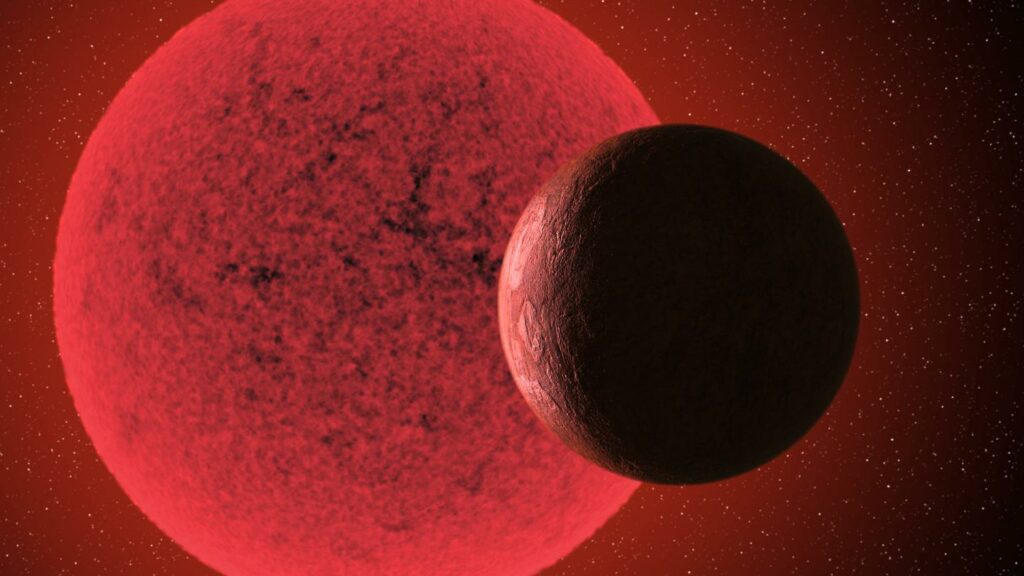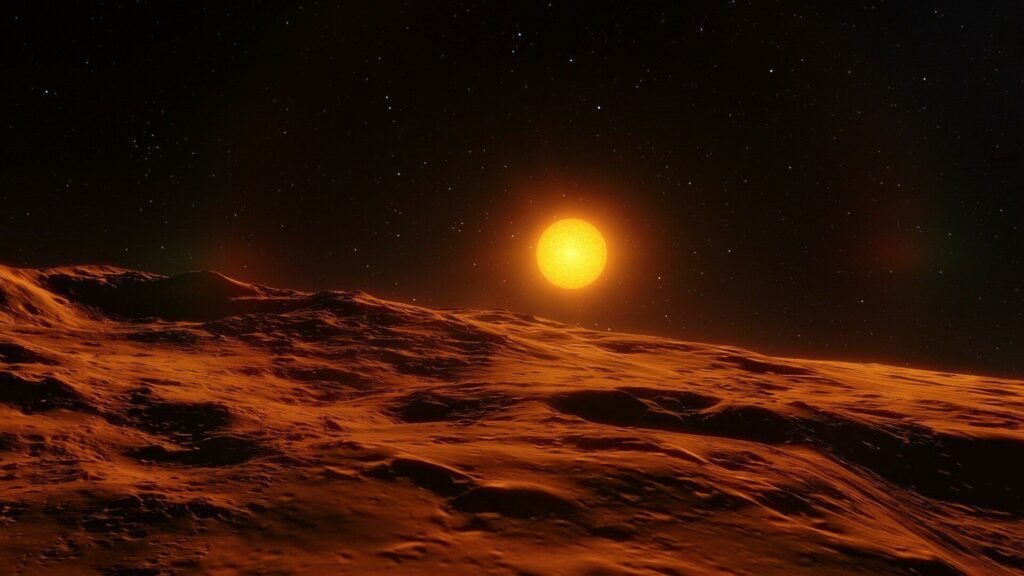After analyzing the data collected by the Spitzer and TESS space telescopes, American astronomers found no traces of the atmosphere of the hot exoplanet GJ 1252b. The researchers also concluded that even if the planet had a powerful gas envelope at an early stage, it would have lost it in a very short period of time.
Red Dwarf’s Hot Super-Earth
The exoplanet GJ 1252b was found in 2019 by the TESS telescope. It orbits a red dwarf located 65 light-years from the Sun. Its radius exceeds the radius of our planet by 1.2, and its mass is 1.3 times. Astronomers call such bodies super-Earths.

The orbit of GJ 1252b passes at a distance of 0.00916 AU (1.35 million km) from its parent star. Due to such proximity, the temperature of its daytime hemisphere (the exoplanet is in tidal capture) is about 1140 °C.
Missing atmosphere
Astronomers have long been interested in whether stony bodies which orbits pass at such a short distance from the surface of their luminaries are able to maintain their atmospheres. For this purpose, they analyzed the data collected by the TESS telescope on its transits and the results of archival observations made by the Spitzer infrared Observatory. They also assessed the possibility of replenishing the atmosphere of GJ 1252b due to volcanic activity.

During the analysis of the data, astronomers were unable to find traces of the presence of a significant atmosphere in GJ 1252b. Moreover, they came to the conclusion that even if initially GJ 1252b had a powerful gas shell consisting of carbon dioxide (with a pressure at the surface of 100 bar), it would have lost most of it in just a million years. For comparison, the estimated age of the GJ 1252b system is 3.9 billion years.
In theory, GJ 1252b could replenish its atmosphere due to volcanic activity and magma degassing (provided that it contains two orders of magnitude more carbon than Earth’s magma). But even in such a scenario, for 4 billion years of its existence, it still had to inevitably lose most of its gas envelope.
Earlier we talked about how astronomers created a three-dimensional portrait of a binary star system.
According to https://arxiv.org
Follow us on Twitter to get the most interesting space news in time
https://twitter.com/ust_magazine

